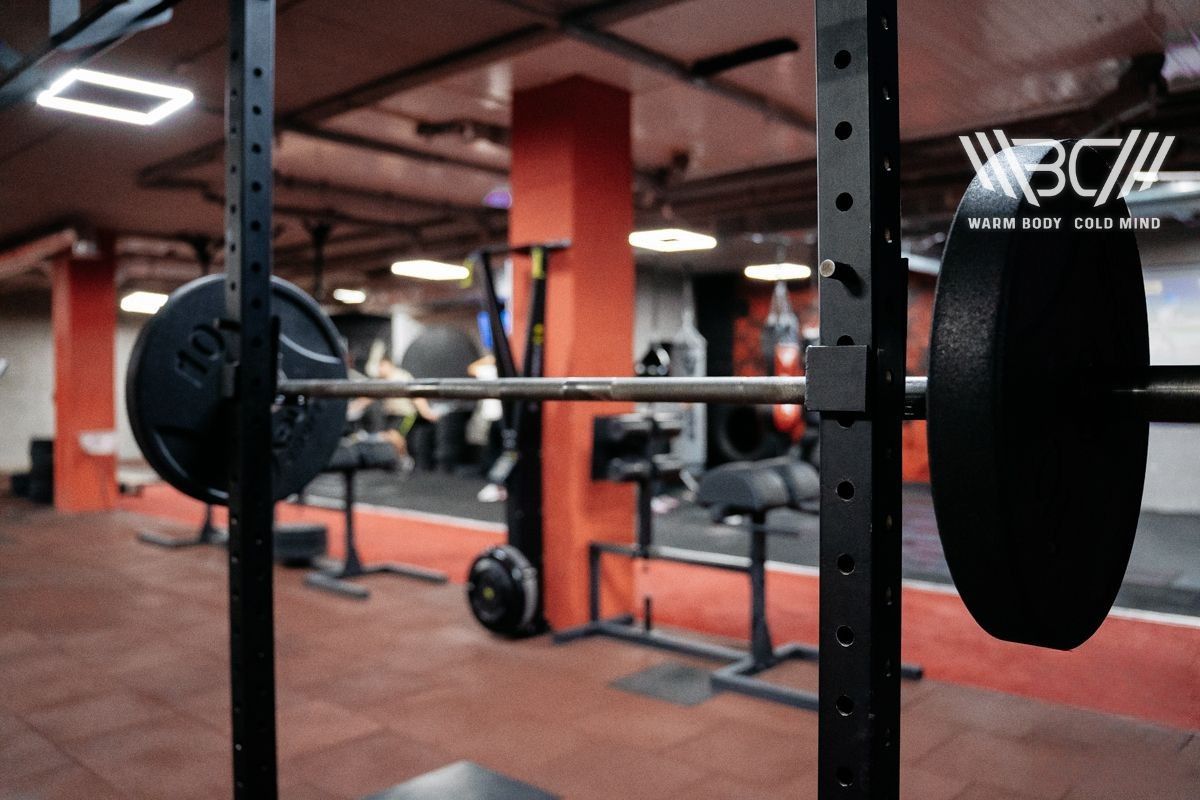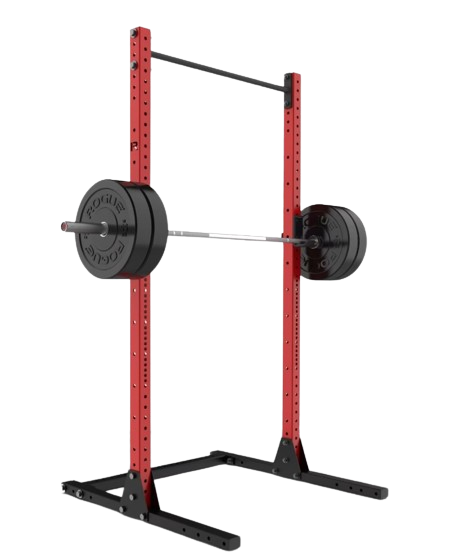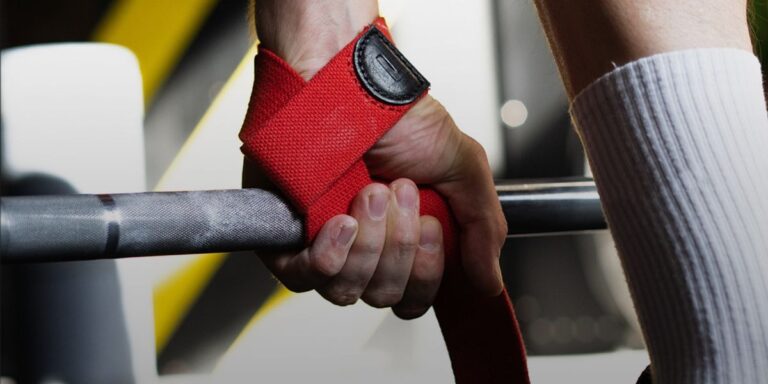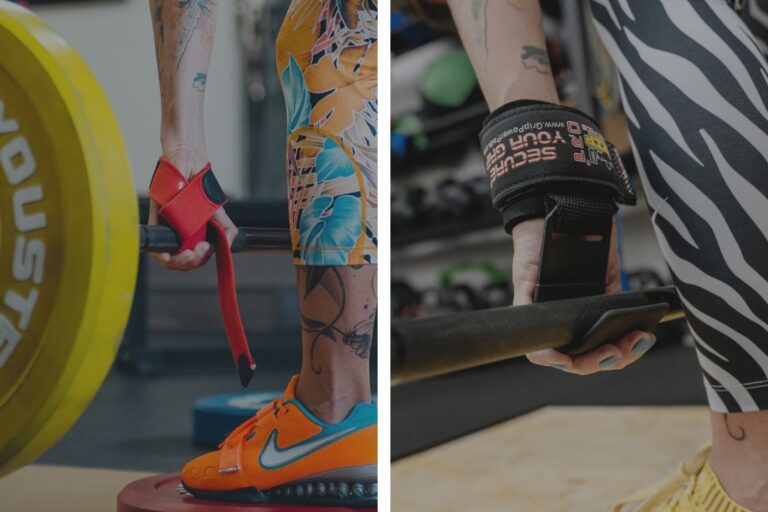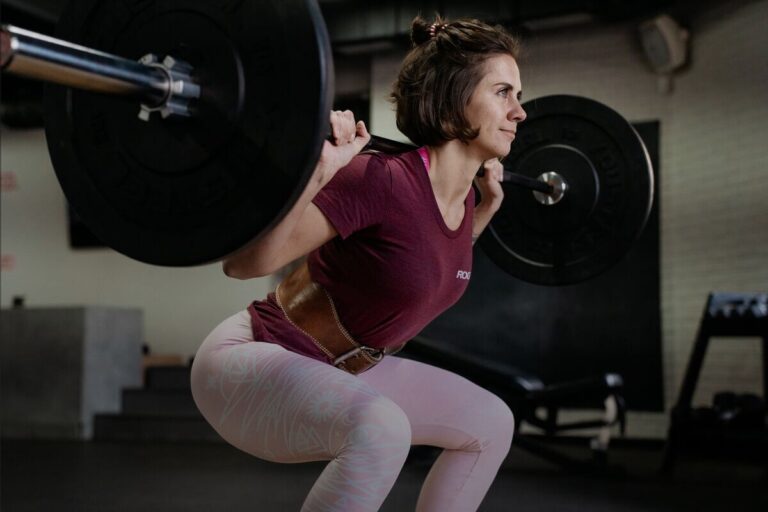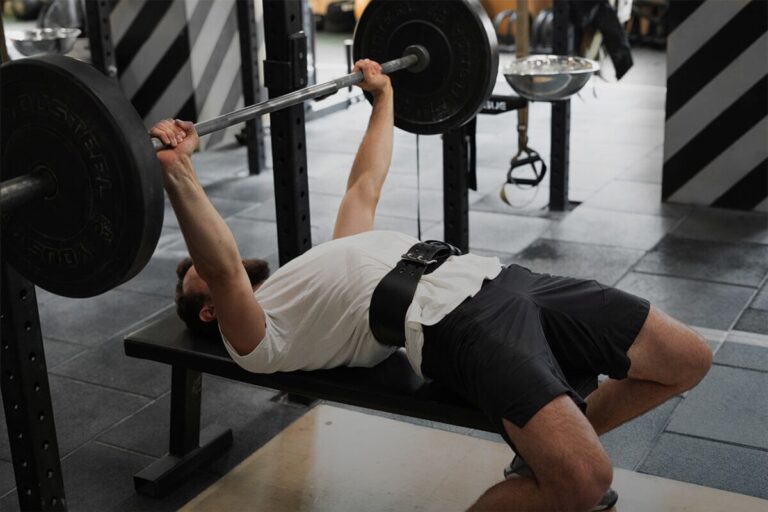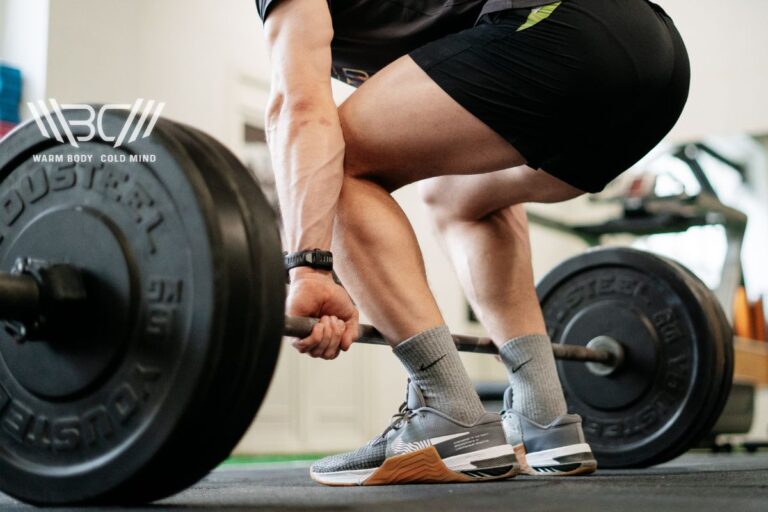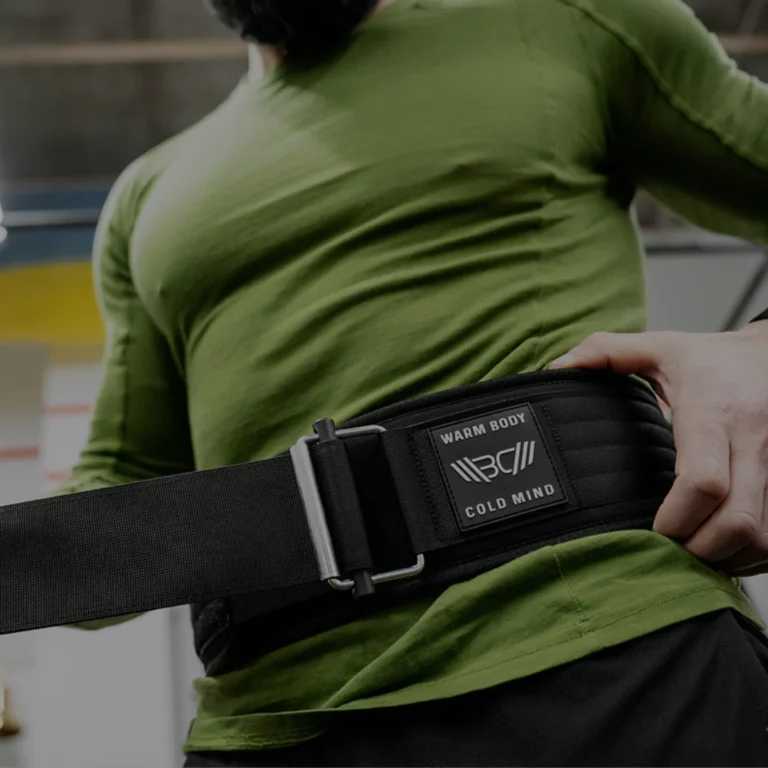Power Rack vs Squat Rack: Learn the Difference
Power rack vs squat rack; which one is better? A more accurate question would be something like ‘Which one is better for me?’.
Many gym-goers have undoubtedly (especially in their early gym days) gone into a gym and seen a massive construction, or at least two vertical beams holding a barbell and some heavy weight plates. And it is not uncommon to feel intimidated after such an encounter and think something like, “I’m going to avoid this contraption and stick to what looks familiar”. And who would blame you?
The best approach to this conundrum would be to intimately familiarize yourself with both the power rack and the squat rack, learn what each of them does, what makes them different and ultimately – decide on which one would suit you better.
So, squat stand or power rack? Let’s dive deep into the gritty details of these two in order to make the decision easier.
Rack on!
What is the difference between power rack vs squat rack? – The difference between a power rack and a squat rack is their versatility and safety features. A power rack offers a broader range of exercises with safety pins, while a squat rack is more basic and designed primarily for squatting.
What is a Squat Rack?
A squat rack is a basic piece of equipment that is tailored for strength training, particularly squats, which is one of the most effective exercises for building strength in your lower body. It’s usually made of heavy-duty steel, and it consists of two adjustable vertical posts that support a horizontal barbell.
Some of them have safety features, like catch bars or straps, that act as a fail-safe during heavy lifts and prevent injuries in case you lose control of the weight. A squat rack isn’t meant for just squats, although the name would suggest otherwise. It can be used for bench presses, overhead presses, and deadlifts.
You’ll find it in most commercial and home gyms because it’s so adaptable and it supports a wide range of exercises. It’s suitable for both beginners and advanced lifters. If you’re a beginner, a squat rack will give you a controlled environment to learn proper form and build foundational strength.
If you’re somewhere in between a beginner and a pro, you can use a squat rack to progressively overload your muscles in a safe way, which is exactly what you need if you want to continuously build strength and muscle. Those that are advanced can use a squat rack for high-intensity training and complex lifting routines. It really works for everyone; there’s no fitness level a squat rack won’t be suitable for.
Another great thing about a squat rack is that it’s easy to include it into your fitness routine, and it’s most effective when you incorporate it into a balanced strength training program that targets all major muscle groups.
This will prevent imbalances that can lead to injury, and make sure your muscles are growing symmetrically. If you’re looking to improve your strength, muscle mass, and overall fitness, there’s no way you won’t enjoy having a squat rack.
5 Squat Rack Benefits
Squat racks pack a number of benefits for the user. They were designed to overcome some safety concerns after all, as well as benefiting both beginners and more advanced lifters. Let us see the five most prominent benefits that squat racks have.
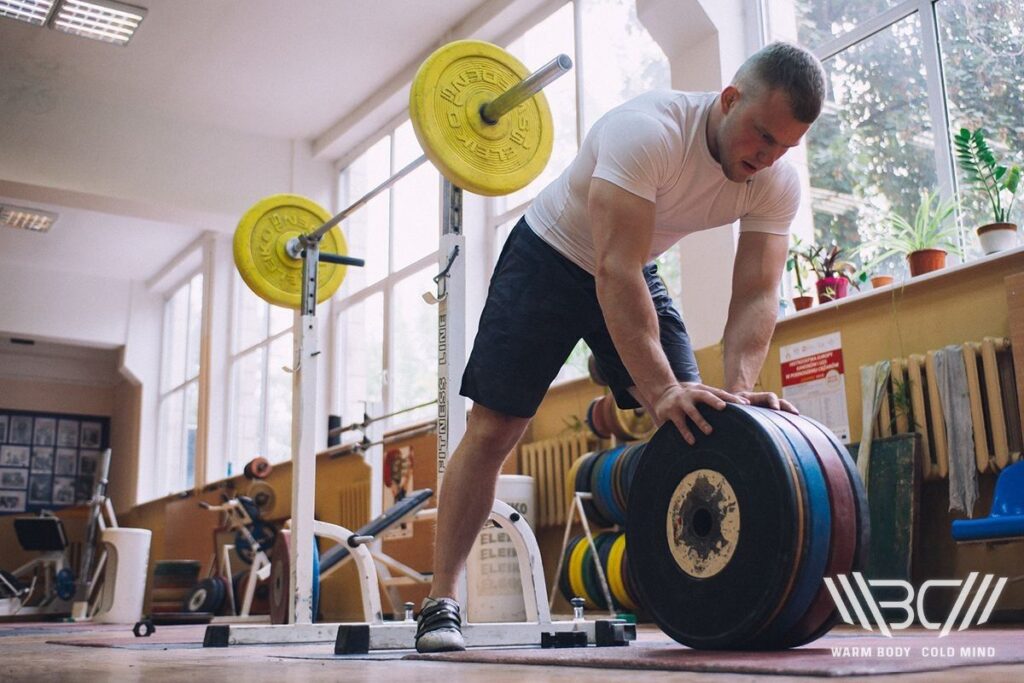
✅ Versatile Exercises
You would think you can use it for squats only, but a squat rack is much more versatile than that. You can also use it for bench presses, deadlifts, overhead presses, etc. Basically, a squat rack is a one-stop solution for a well-rounded strength training routine.
✅ Safety
Some squat racks have safety bars or straps that minimize the risk of injuries during heavy lifts and provide a secure environment to train (especially if you’re doing it without a spotter).
✅ Enhanced Strength and Muscle Building
A squat rack will allow you to lift heavy weights that are essential if you want to build strength and muscle. They enable progressive overload, and that is key for continual physical development and breaking through plateaus.
✅ Adjustability and Customization
Most squat racks will allow you to adjust the height, so they’re suitable for people of all sizes and they will work for various exercises.
✅ Durability
Long-term investments are the only ones worthwhile, and a quality squat rack will be one of them. They’re usually made of robust materials, and they can withstand frequent, intense use.
4 Squat Rack Cons
As with most things, there’s the other side of the coin. We will address these issues as well, just so that you can paint a clearer and more detailed picture of what squat racks are in general.
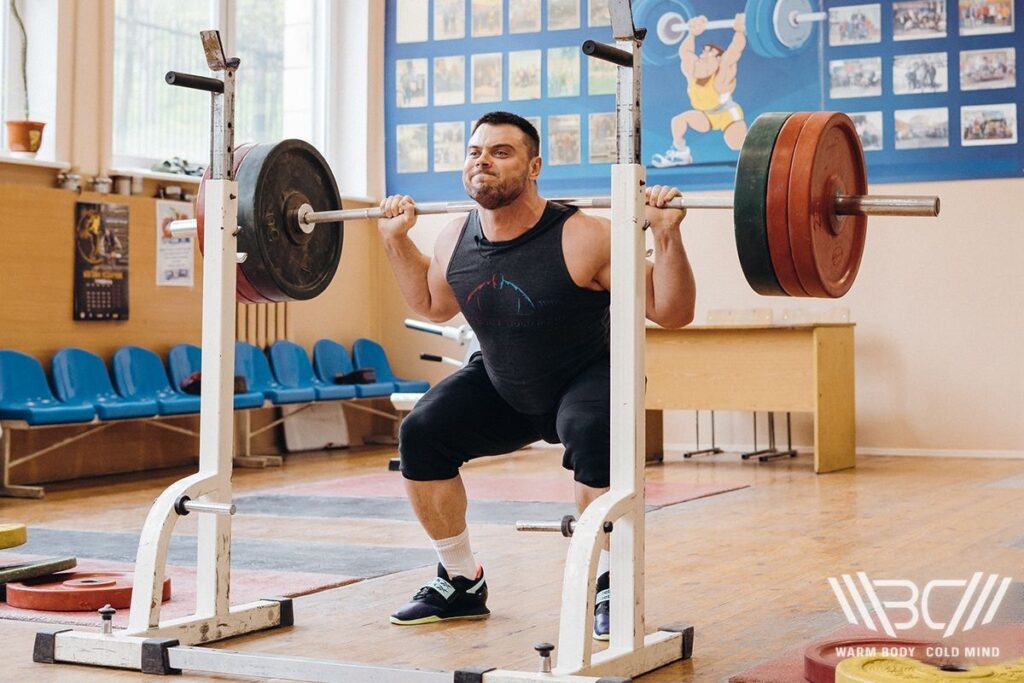
❌ Price
Unless you get a high-quality squat rack, you’ll waste both your time and money. But the problem with premium squat racks is that they can cost quite a bit, which can be an issue if you’re trying to work within a budget.
❌ Space Requirements
Home gyms tend to be smaller, and although some models are more compact, a squat rack will need a dedicated space in your gym, which might not be ideal for everyone.
❌ Complexity for Beginners
If you’re new to strength training, a squat rack can seem complex and intimidating, which may cause you to use it improperly or avoid it altogether.
❌ Limited Cardiovascular Benefits
They’re great for strength training, but squat racks don’t offer that much in terms of cardiovascular fitness, so you’ll need a separate routine for that.
Our Recommended Squat Rack – Rogue SML-2C Squat Stand
Rogue is known for their high-quality, versatile equipment, and the SML-2C is just as exceptional as you would expect.
It’s made in the USA, weighs 157 pounds, and has a weight capacity of a whopping 1000+ pounds. The stand has robust steel uprights that accommodate a whole range of exercises, from squats to bench presses, pull-ups, clean pulls, and floor presses. The adjustable fat/skinny pull-up bar makes it even more functional because it caters to different grip preferences.

Its design is hybrid and merges elements from Rogue’s S-2 and Monster SM-2 squat stands. The base is bolted together and remains stable in all conditions. You can choose from 10 different colors to customize it, and don’t worry about not having enough space for it – its footprint is 49’’ x 48’’, so you’ll be able to fit it even if your gym is tiny.
What is a Power Rack?
You may have heard it being called a power cage or a squat cage; a power rack is another fundamental piece of equipment in strength training. Unlike a squat rack, a power rack has 4 vertical steel posts connected by horizontal bars that form a robust, enclosed structure which looks like a cage.
Its best feature is certainly versatility – you can do all sorts of compound movements, like squats, bench presses, deadlifts, and overhead presses. The power rack’s primary purpose is to make weightlifting safer, which is why its design includes safety pins or catches that prevent accidents and allow you to do your workouts alone.
So, in short – a power rack holds a squat rack in itself. But, a power rack is also a much more complex, robust, and versatile piece of gym equipment than a squat rack.
Who can use a power rack, you ask? Pretty much everyone, regardless of their fitness level, and the weight-bearing exercises you can do on it are extremely beneficial for bone health. A beginner will like it because they’ll have a supportive framework to learn and perfect basic movements in, which will make them more confident, and they won’t get injured as easily as they would otherwise.
As a beginner progresses to the intermediate and then advanced level, the power rack will allow them to lift heavy weights and progressive overload. You’ll see a lot of different people using power racks. If you want to build strength or muscle mass, you won’t make a mistake with using a power rack. Powerlifters like power racks, too, because of their versatility and safety features.
Even those in rehabilitation will benefit from a power rack because of its controlled environment, which will allow them to gradually regain their strength with less risk. You can include a power rack into your training routine pretty much as soon as you start. As you advance, the power rack will adapt perfectly to your evolving needs and accommodate a wide range of exercises.
6 Power Rack Benefits
As opposed to the squat rack (above), we’ve listed six benefits for the power rack instead of just five. This doesn’t mean that the power rack is automatically a better piece of equipment. While you can compare them, and at first glance, both look similar, they do serve different purposes. So naturally, they’d have slightly different benefits accompanying them.
✅ Versatility
Squats, bench presses, pull-ups… A power rack can do it all and more! It’s a very versatile piece of equipment that you will be able to use for lots of different exercises.
✅ Safety Features
Weightlifting can be dangerous, and it can cause injuries, so safety features are always a huge plus. The built-in safety features are one of the best things about power racks – the safety pins or catches act as a safety net and prevent accidents. This is very important in general, but especially for solo workouts.
✅ Progressive Overload
You can set safety pins at different heights, which will allow you to progressively overload your workouts. As your strength improves, you can up the weight little by little through safety pin adjustments. This means that you will see continuous progress and muscle development.

✅ Stability
The four-post structure that a power rack has provides exceptional stability. Heavy compound movements rely on stability, so a power rack will give you a safe environment to perform them.
✅ Solo Training
Think of safety pins as your little spotters that eliminate the need for having a partner during workouts. This is very beneficial for home gyms, or if you like to train when there’s not a lot of people in a commercial gym.
✅ Compatibility with Accessories
A lot of power racks are compatible with accessories, so you can further customize your workouts. You can add dip bars, band pegs, and weight plate holders to expand the range of exercises your power rack supports.
Subscribe!
The latest reviews of must-have home gym training equipment, apparel, and supplements that will enhance your performance and bring you new results.
4 Power Rack Cons
And, of course, there are certain considerations that you need to be wary of when it comes to power racks.
❌ Space Requirements
If you’ve ever seen a power rack, you know it’s quite bulky. It’s called a power cage for a reason, after all. Their four-post structure can take up a lot of floor space, so if your home gym is really tiny, you’ll have problems fitting a power rack in it.
❌ Cost
High-quality power racks come with a hefty price tag. It’s a long-term investment for sure, but the initial cost is usually pretty high, especially when you factor in the accessories you might want to add.
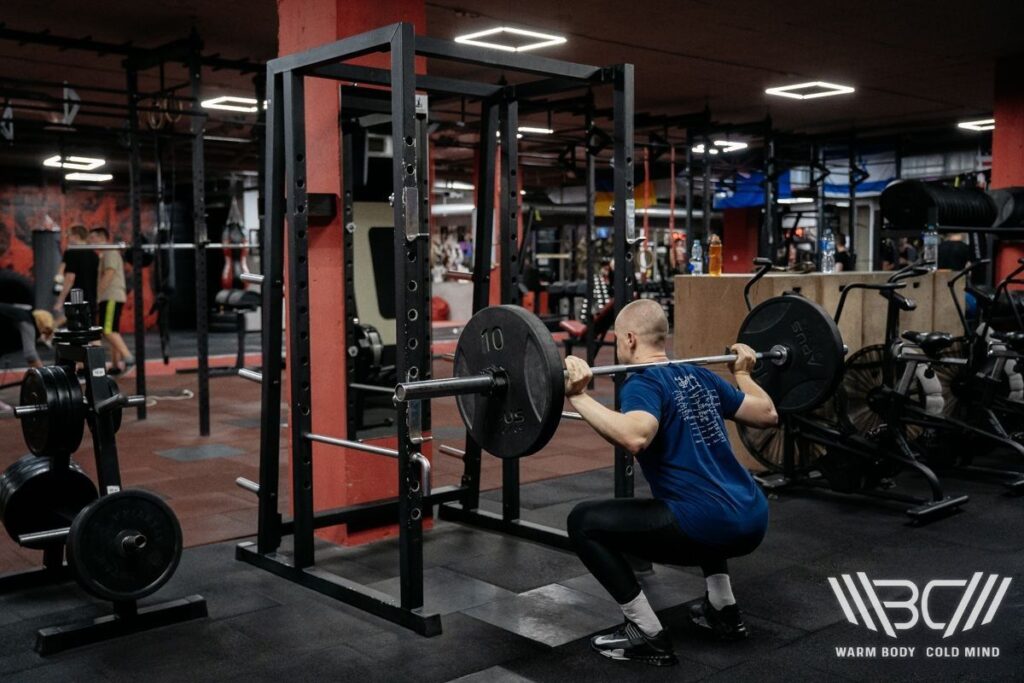
❌ Assembly and Weight
The heavy, sturdy construction can make it difficult to put a power rack together, especially when you’re doing it by yourself. Moving it, however, is something you won’t be able to do without someone’s help, and even then, it will not be easy.
❌ Needs Ceiling Height
Even if your gym is spacious, you’ll have no luck with fitting a power rack in it if your ceilings are low. Before buying a power rack, make sure your ceiling is high enough for the rack’s height, and remember you’ll need some extra clearance for exercises like pull-ups.
Our Recommended Power Rack – Rogue RML-390F Flat Foot Monster Lite Rack
RML-390F power rack is the perfect example of Rogue’s dedication to producing innovative strength training equipment. This power rack has a self-stabilizing base, which means you don’t need floor bolting and it provides flexibility in workout space.
The power rack is made in Columbus, Ohio. It has 3×3’’ 11-gauge steel uprights coupled with 2×3’’ 11-gauge steel bases with Westside hole spacing. This design makes the rack durable and stable. Its footprint is compact for what it is, and it strikes a balance between functionality and space efficiency.
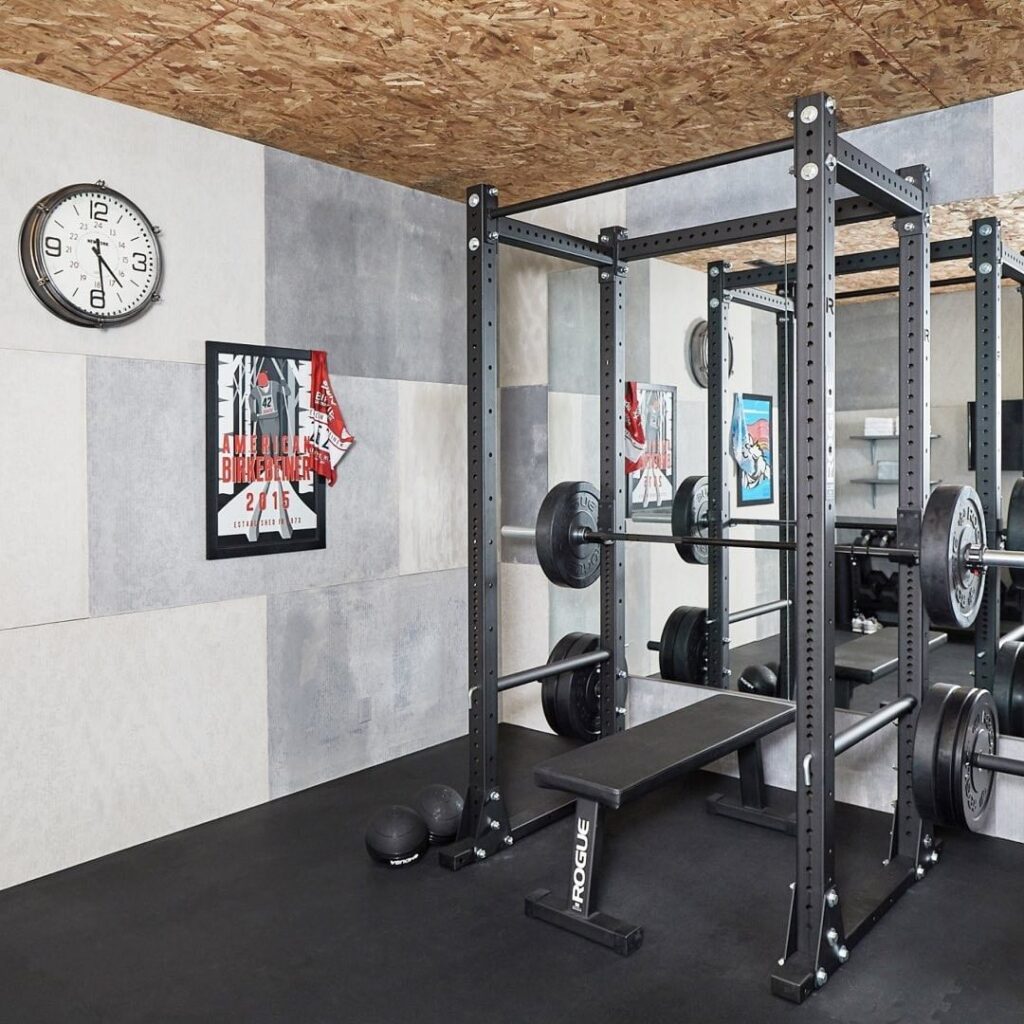
You can choose between a Single Skinny or Fat/Skinny 43’’ pull-up bar for different grip options. Each order comes with a pair of Monster Lite J-Cups and a pin/pipe safety system, and if you already own a Rogue SML-2 or SML-3 Monster Lite Squat Stand and want to convert it to a Flat Foot Power Rack, there’s a conversion kit you can buy to do so.
What is a Squat Stand?
A squat rack or squat stand – is it actually the same thing? The answer might surprise you because some people use these terms interchangeably, but these two are not the same; a squat stand is a specific type of equipment made for strength training.
It has two vertical posts whose height can be adjusted, and it’s made to hold a barbell. Unlike squat racks or power racks, squat stands are more compact and don’t have horizontal safety bars. They don’t need as much space as the racks do, and they’re easier to move, so if your gym is really small, a squat stand might be a good idea. They usually come with J-hooks to hold the barbell.
They’re popular among weightlifters, powerlifters, and bodybuilders who focus on free weight exercises, although squat stands can be used by a wide range of people. Football and rugby players, track athletes, and anyone else who wants to work on their lower body strength will find a squat stand useful. It can also be used for functional strength training and compound movements like squats and overhead presses.
If you’re starting your home gym from scratch, there’s a chance you’re looking to save some money because a well-rounded gym is expensive, and there’s other equipment you want to buy. A squat stand is more affordable than squat and power racks, so it’s a good way to start your home gym, and you can always upgrade to a rack later if you want to.
Another great thing about a squat stand is that it’s easy to move, which can make your training setup more flexible, and its open design can be more approachable (and less intimidating) for beginners.
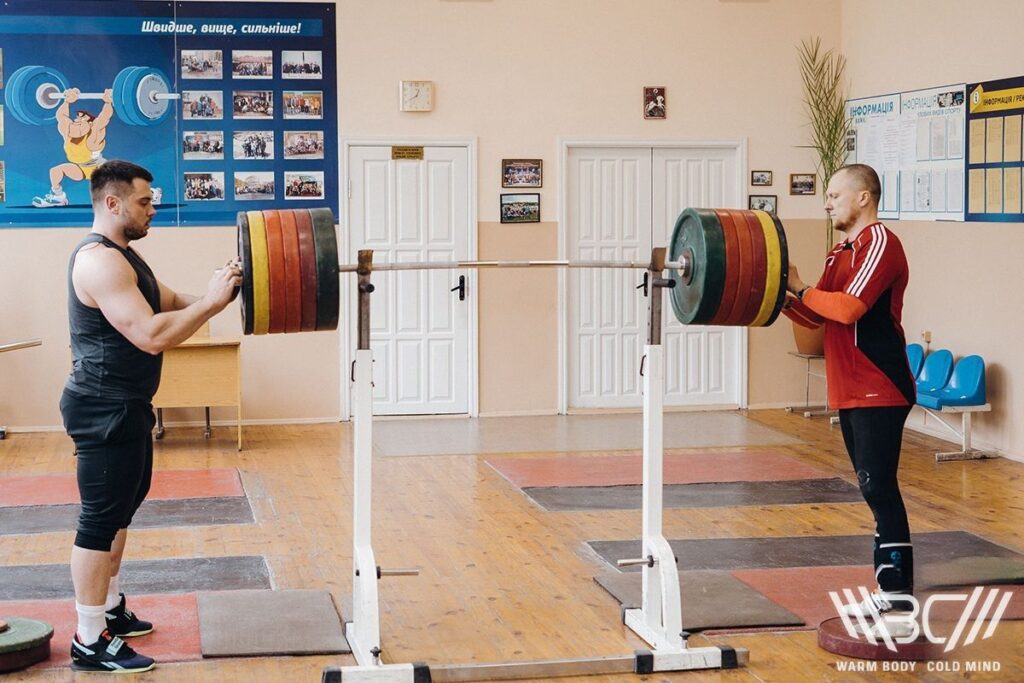
Of course, it’s not all rainbows and cupcakes and there are drawbacks to consider. If you work with heavier weights, you’ll notice that a squat stand isn’t as stable as a full rack. And speaking of heavy weights, a squat stand’s weight capacity is nowhere near as high as a power rack’s.
There’s also the issue of safety features, or lack thereof. This is a real problem if you want to work out without a spotter, and it’s best to refrain from heavy weights if that is the case.
4 Main Differences Between Squat Racks and Power Racks
At a glance, there are a lot of similarities between these two, but if you look more closely (or if you’ve used them), there’s a decent number of differences between a squat rack and a power rack.
1. Versatility
Both are versatile, but a power rack is still a winner in this category. You can use a power rack for a lot of exercises, like squats, bench presses, pull-ups, deadlifts, and many others. There’s also the option of adding accessories, like pull-up bars, dip bars, and landmine attachments, to add even more variety. Those that want a more comprehensive strength training program usually opt for power racks.
Squat racks are still versatile, but they focus more on squats and bench presses, and they’re better for basic strength training routines. Some squat racks will allow you to do overhead presses and deadlifts, but their scope for a variety of exercises is generally more limited.
2. Customization
Again, the power rack is the winner here because it’s highly customizable. You can add accessories and attachments to it, like cable pulleys, additional weight storage, or even resistance band pegs. A power rack will allow you to tailor it to your goals and preferences, whether it’s adding new exercises to your routine, or making the existing ones more complex.

Compared to the power rack, the squat offers limited customization. Their design is simple and straightforward, and it concentrates on making specific exercises more functional. You can adjust the height and width, but when it comes to adding accessories or modifying the rack to suit different workout styles, the result is pretty underwhelming compared to a power rack.
3. Safety
Both will provide a safe workout environment and they are built to be sturdy and reliable. A squat rack, however, usually doesn’t have the same level of built-in safety mechanisms as power racks. Depending on the model, you can possibly invest in some spotter arms, but as long as you use the rack correctly, you’ll be fine, and you don’t need to worry about being in danger.
Power racks are fantastic in providing a safe workout environment, more so than squat racks. They have adjustable bars or straps that act as a fail-safe during exercises like heavy squats or bench presses. You’ll find straps and bars on some squat racks, too, but not in the same amount.
4. Size
A small gym will have an easier time fitting a squat rack than a power rack. Squat racks’ footprint is more compact and although their design is streamlined and basic compared to power racks, it contributes a lot to their space efficiency.
A power rack will need more floor space, and it will also need decently high ceilings. This is a direct consequence of their design which focuses so much on versatility and safety, so the space requirement is justified, but it can be an issue for some people.
Squat Rack vs Power Rack: Which is Better for a Home Gym?
Decisions, decisions… You want it all, but you can’t fit everything in your home gym, and let’s face it, gym equipment is expensive.
Choosing between a squat rack and a power rack comes down to a few things – personal preference, potential space and budget constraints, and fitness goals.
If your home gym is small and has a relatively low ceiling, you have no choice but to go with a squat rack. A power rack needs a lot of floor space, and your ceiling needs to be decently high, otherwise you won’t be able to work out.

If, however, you have no issues with space, and want a more comprehensive strength training routine, the power rack is a better choice. Its cage-like design will allow you to do a broader range of exercises. There’s a lot more versatility to power racks, so keep that in mind. When you count in the stability, features, and adaptability for solo workouts, the power rack is a better investment in the long term.
And while we’re on the subject of making an investment, power racks are more expensive than squat racks because of all the additional features and complexity. A squat rack is a more economical solution, and it’s still very effective for strength training.
Power rack or squat stand, adding accessories or not… It boils down to what you can fit and what you can afford. Can you afford a power rack? If you can, and if you can fit it, then go for it. If you answer negatively to either of these questions, get a squat rack.
FAQ
Are Power Racks Safer Than Squat Racks?
In most cases, yes. Power racks are more designed to benefit the solo lifter. So, if you lack a spotter, then having a power rack might be the safer choice between the two.
Should You Squat in a Power Rack?
You can use a power rack for squats without any issues. More than just that, with a power rack, you’ll enjoy more safety in the form of adjustable safety pins and the fail-safe mechanism that will prevent accidents when you’re lacking a spotter.
Is a Power Rack Good Enough for a Home Gym?
A power rack might not be the number one choice for most home gyms because of the space they require, as well as the high cost compared to buying smaller gym pieces and building up the gym. However, if those two factors are not an issue, then a power rack is definitely an amazing gym piece for your home gym.
Can You Use a Squat Rack for Bench Press?
Most squat racks have adjustable J-hooks (or at least offer them separately), which enables you to do bench presses without any issue. The only thing you’ll need is a bench which is commonly not sold as part of a squat rack.
What Is the Difference Between a Pull-up Bar and a Power Rack?
A pull-up bar is a horizontally fixed bar that allows for exercises such as pull-ups (hence the name), chin-ups, leg raises, windshield wipers, etc. A power rack, on the other hand, is much more complex. Power racks have a pull-up bar as part of their construction allowing for all the above listed exercises.
On a power rack, you can do exercises that you simply can’t do on a pull-up bar (e.g., barbell squats, bench press, barbell lunges, rack pulls, etc.). A power rack is bigger, more costly, more versatile and more complex than a pull-up bar.
Conclusion
So, squat rack vs power rack? Hopefully, you now know the difference between the two, and which benefits and considerations both of them bring to the table. In short, you can say that a power rack is just a squat rack, but “on steroids”, considering how much more versatile a power rack is in comparison.
But in reality, the question should not be ‘Which one is better?’ But more along the lines of ‘Which one is better for you?’. Because you cannot really expect everyone to want/need/prioritize the same things when it comes to lifting.
If you have any personal experience, tips/tricks, ideas or secrets to share on the topic – please do. We love to hear from our readers, as it not only enriches the content we provide, but it also gives us the opportunity to learn from others.
Which one is your choice – squat rack or power cage? Tell us in the comments below!
Racking out!
Also read:
References:
- Daniel Aube, Tanuj Wadhi, Jacob Rauch, Ashmeet Anand, Christopher Barakat, Jeremy Pearson, Joshua Bradshaw, Spencer Zazzo, Carlos Ugrinowitsch, Eduardo O. De Souza “Progressive Resistance Training Volume: Effects on Muscle Thickness, Mass, and Strength Adaptations in Resistance-Trained Individuals,” Journal of Strength and Conditioning Research 36, no. 3 (2022): 600-607.
- Ian Douglass “Power Rack vs. Squat Stand: Which Piece of Equipment Do You Need?,” BarBend, https://barbend.com/squat-stand-vs-power-rack/ (accessed January 25th, 2024).
- Jake Dickson “The Best Full-Body Workout You Can Do In the Squat Rack,” BarBend, https://barbend.com/full-body-squat-rack-workout/ (accessed January 25th, 2024).
- “Slowing bone loss with weight-bearing exercise,” Harvard Health Publishing, https://www.health.harvard.edu/staying-healthy/slowing-bone-loss-with-weight-bearing-exercise (accessed January 25th, 2024).
- Tengku-Fadilah Kamalden, Qais Gasibat, Shamsulariffin Samsudin, Jacklyn Joseph “Occurrence of Muscle Imbalance and Risk of Injuries in Athletes using Overhead Movements: A Systematic Review,” Mont Journal 19, no. 3 (July 2021): 3-10.
Author: Sergii Putsov
PhD in Sport Science, Olympic weightlifting, Strength & Conditioning coach and fitness expert
Sergii Putsov is a professional weightlifter with over 20 years of experience and multiple national medals. He was a member of the National weightlifting team, competing in the 94 kg weight class. Sergii holds a master’s degree in Olympic & Professional Sport Training and a Ph.D. in Sport Science. After his athletic career, Sergii transitioned into coaching and is now responsible for designing training programs, writing blog articles, providing live commentary for international weightlifting competitions, and hosting sport and fitness seminars worldwide.

